10 Castles In Scotland That You Should Visit
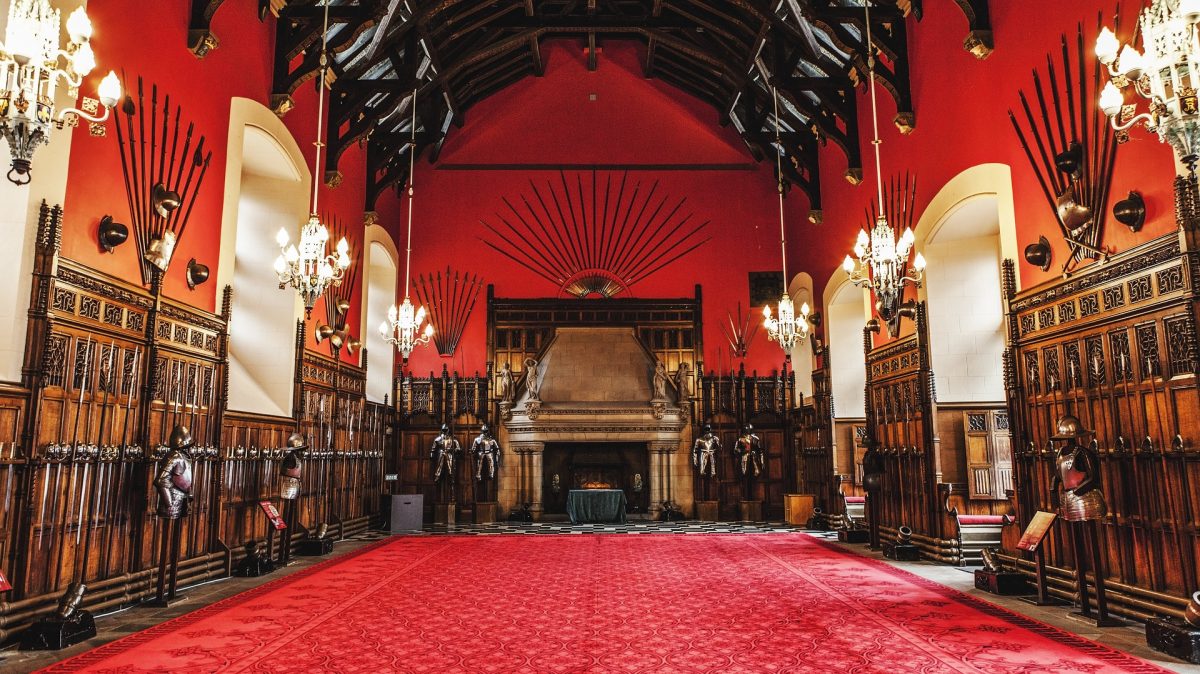
No vacation to Scotland is complete without visiting the country’s many castles. Rich in history and architecture, all of Scotland’s castles have a story to tell. Each castle also comes with a different architectural style ranging from Gothic to Scottish Baronial.
Visiting these castles will transport you back to certain periods in Scotland’s history from Early to the Late Middle Ages. If you’re looking for a trip back in time, here are some really interesting castles you should consider visiting.
1.
Blair Castle
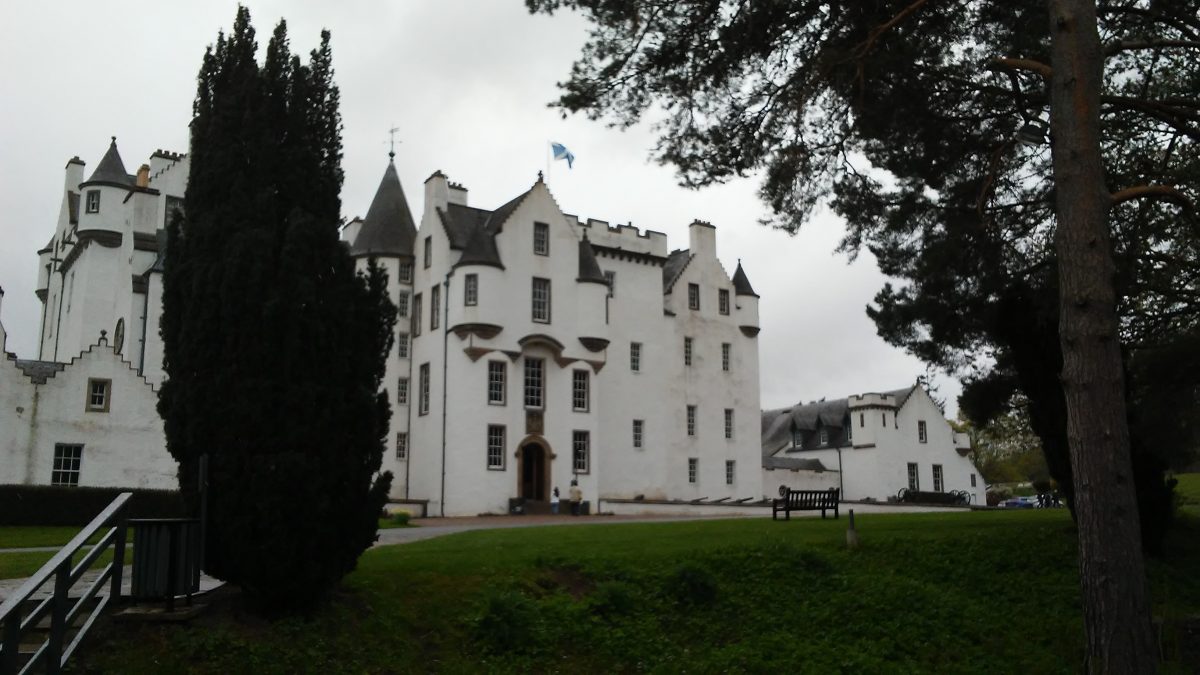
Photo by Valerie Queen-Blazitz on Pexels
Located near the village of Blair Atholl in Perthshire, Scotland, Blair Castle was the home of Clan Murray, a Historic Scottish Clan. This castle has been the home of many politicians, soldiers and entrepreneurs belonging to the clan for 700 years. The castle has been occupied and restored numerous times throughout history.
With its Victorian-era style interior and Scottish Baronial exterior, the Blair Castle offers visitors a glimpse of history from the Middle Ages to Early Modern Times. A collection of portraits, furniture and fine china belonging to members of Clan Murray gives visitors an insight into Scottish history. Visitors can tour around the castle and enter several rooms including the Entrance Hall, Dining Room, the Drawing Room, the Tapestry Room and the Ballroom.
The castle is a great place to bring your children along as they can partake in several activities. These include dressing up in medieval Scottish clothing in the ballroom and going on a treasure hunt around the castle. In addition, visitors can walk through the gardens within the castle’s compound. Hercules Garden is a Georgian style garden with a Statue of Hercules for its centre. Visitors can also walk around Diana’s Grove and be in awe of the country’s finest and tallest trees located near the castle.
For additional information, visit the castle’s official website.
2.
Linlithgow Palace
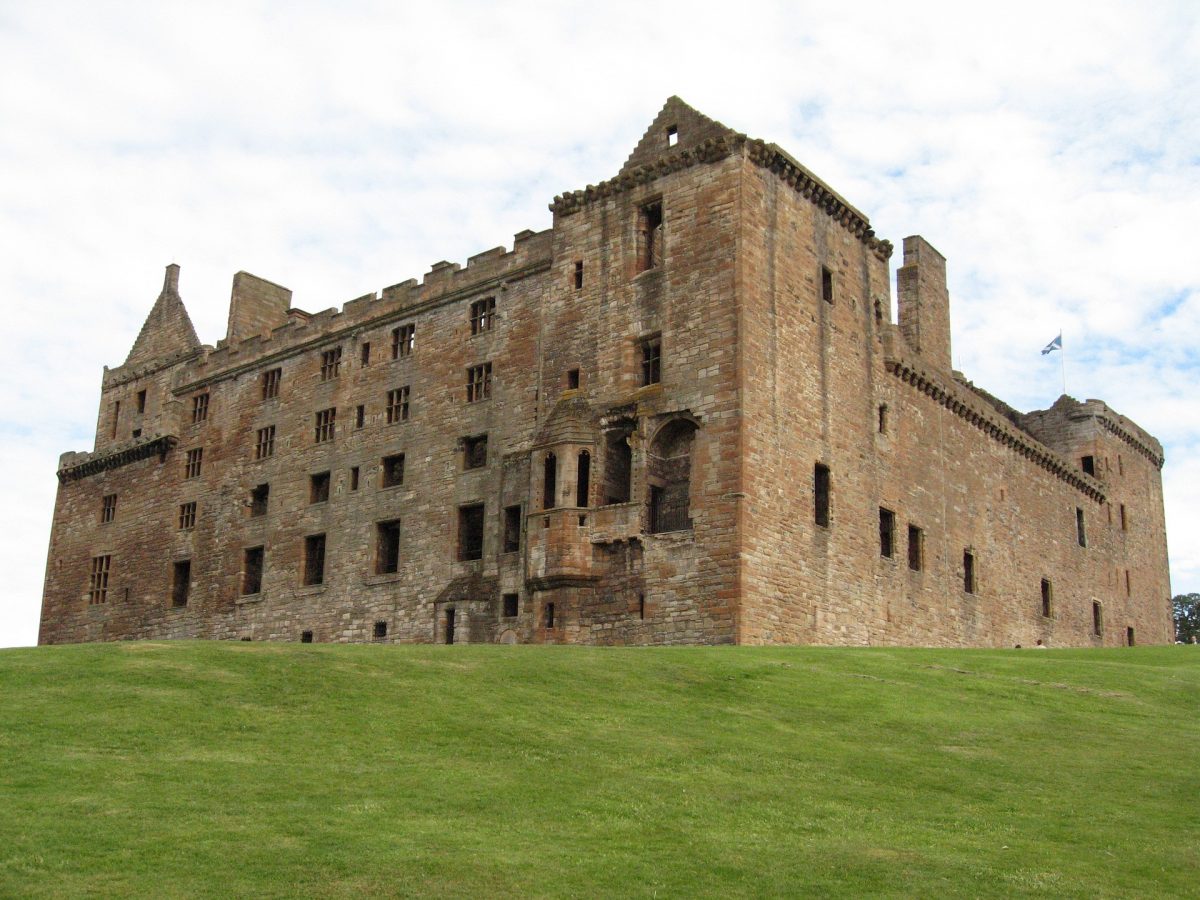
Photo by whitecockadenewsletter on Pixabay
Located east of Edinburgh, in the town of Linlithgow, lies the historic Linlithgow Palace. First built in the 15th Century in a Renassaince style of architecture, the palace holds a significant place in Scotland’s history.
The palace was built as a grand residence for the Scottish Royal Family by King James I. It was also where Mary, Queen of Scots was born and during her reign, she stayed there on several occasions. Throughout history, it has been rebuilt time and again until 1746 when the palace was engulfed in flames.
The palace today is in ruins though much of it is still intact. Both the ground and first floor of the palace are open to visitors. On the ground level, visitors can walk around the courtyard and the ornate fountain. After reaching the first floor of the palace, visitors can explore several rooms including the King’s Chambers and the Great Hall. The first floor also includes a museum that houses ornaments and findings throughout the palace’s history.
For more information, please visit Historic Environment Scotland’s page of the castle.
3.
Huntly Castle
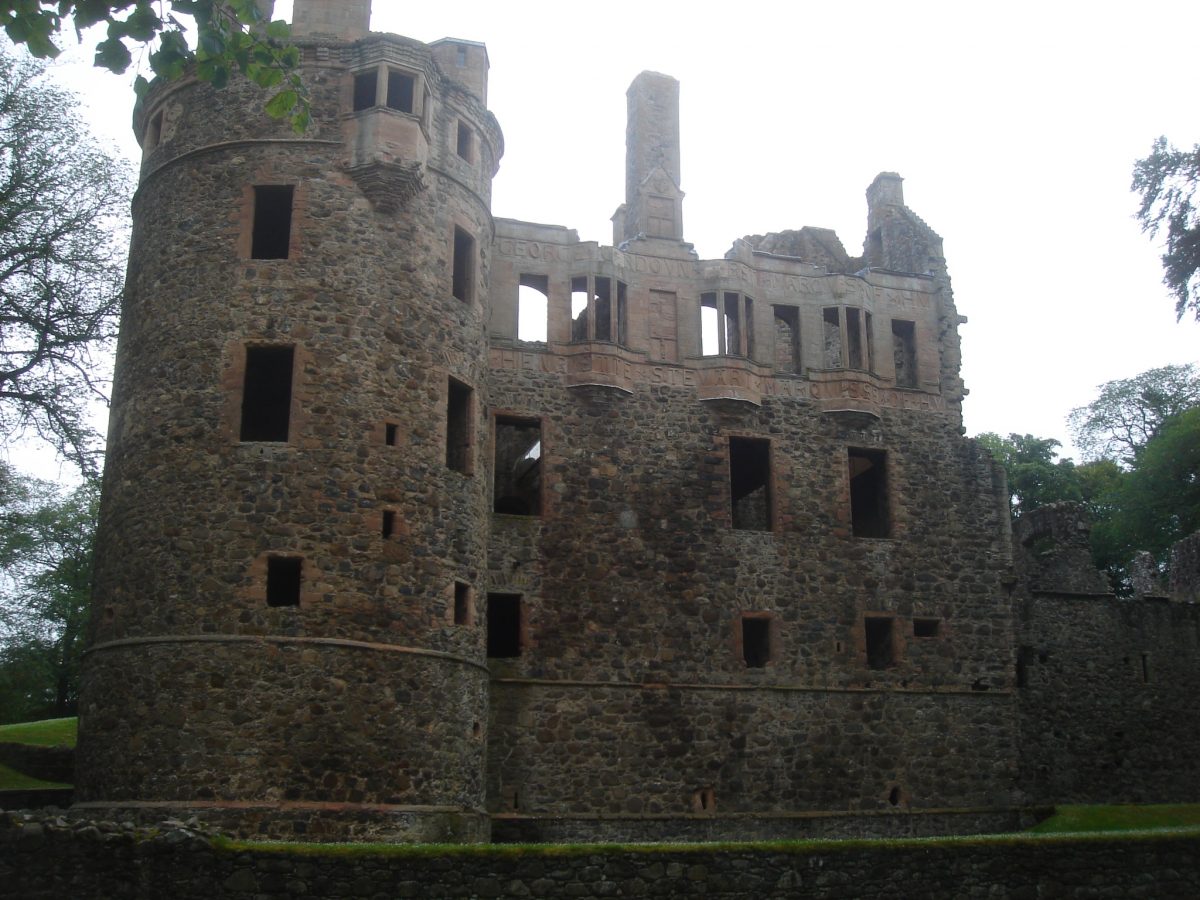
Photo by Cp111 on Wikimedia Commons
Situated in the middle of the beautiful Aberdeenshire countryside, the ruins of Huntly Castle is one of Scotland’s most impressive medieval buildings. The castle was built in the 10th Century by the Earls of Fife. In the 12th Century, the mighty Gordon Clan overtook Huntly Castle and made it their stronghold. Today, the castle is under the management of the Historic Environment Scotland.
The ruins of the castle are open to the public. Visitors can explore the outer buildings on the ground level at their leisure. When they enter the castle, visitors can climb up the stairs and enter the castle’s kitchen. They can also access the basement by climbing down the stairs as well as going further down to find the castle’s prison. By climbing a spiral staircase, visitors will reach the top of the castle which used to be the servant’s quarters.
For additional information, please visit Historic Environment Scotland’s page of the castle.
4.
Urquhart Castle
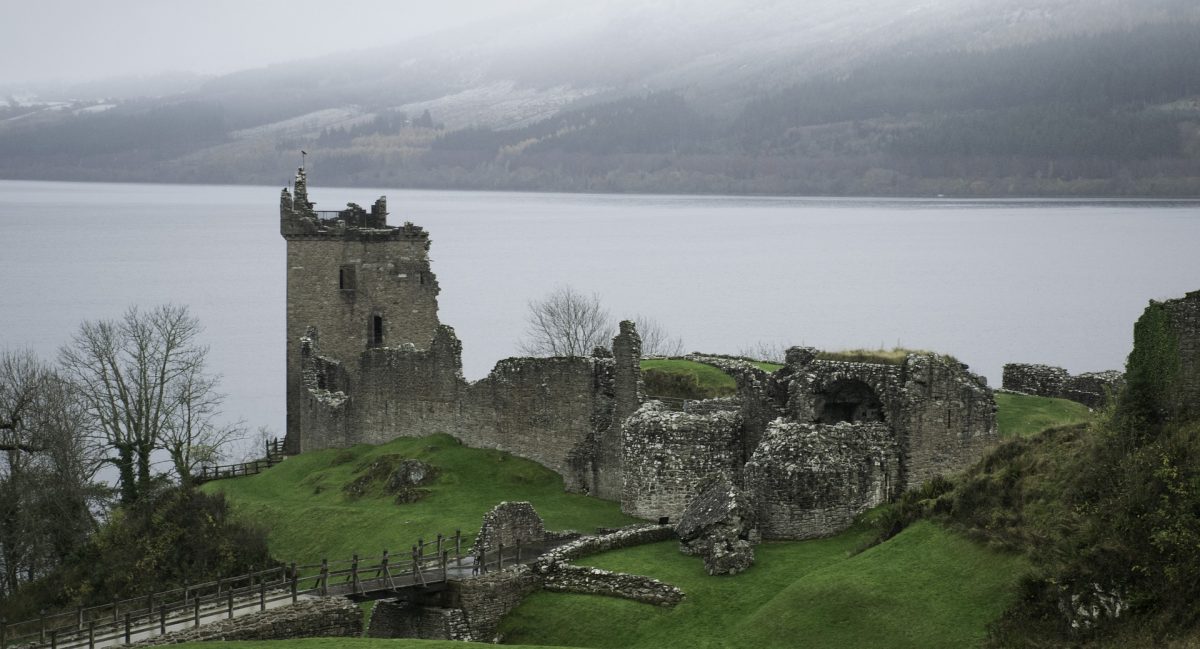
Photo by Ben Alexander on Pixabay
Sitting near Loch Ness in the Scottish Highlands, the ruins of Urquhart Castle is a structure rich in history. The castle has seen numerous wars and raids throughout history dating all the back to the 13th Century.
Urquhart Castle played an important role in the Wars of Scottish Independence. It was captured by the forces of Edward I of England which ignited the war. The Lords of the Isles retaliated and retook the castle from England. In 1689, Urquhart Castle was used in war for the last time when King James VII was ousted from power.
Visitors to Urquhart Castle can get a picturesque view of Lock Ness just by standing on the castle grounds. To reach the castle, visitors have to walk from a steep tarmac path from the visitor centre. Once inside, visitors can explore the castle at their leisure by taking the spiral staircases to several rooms. These include the guardhouse, remaining battlements, the watergate and Grant Tower. In addition, visitors can see more ruins near the castle by going up a steep path.
For more information, please visit Historic Environment Scotland’s page of the castle.
5.
Doune Castle
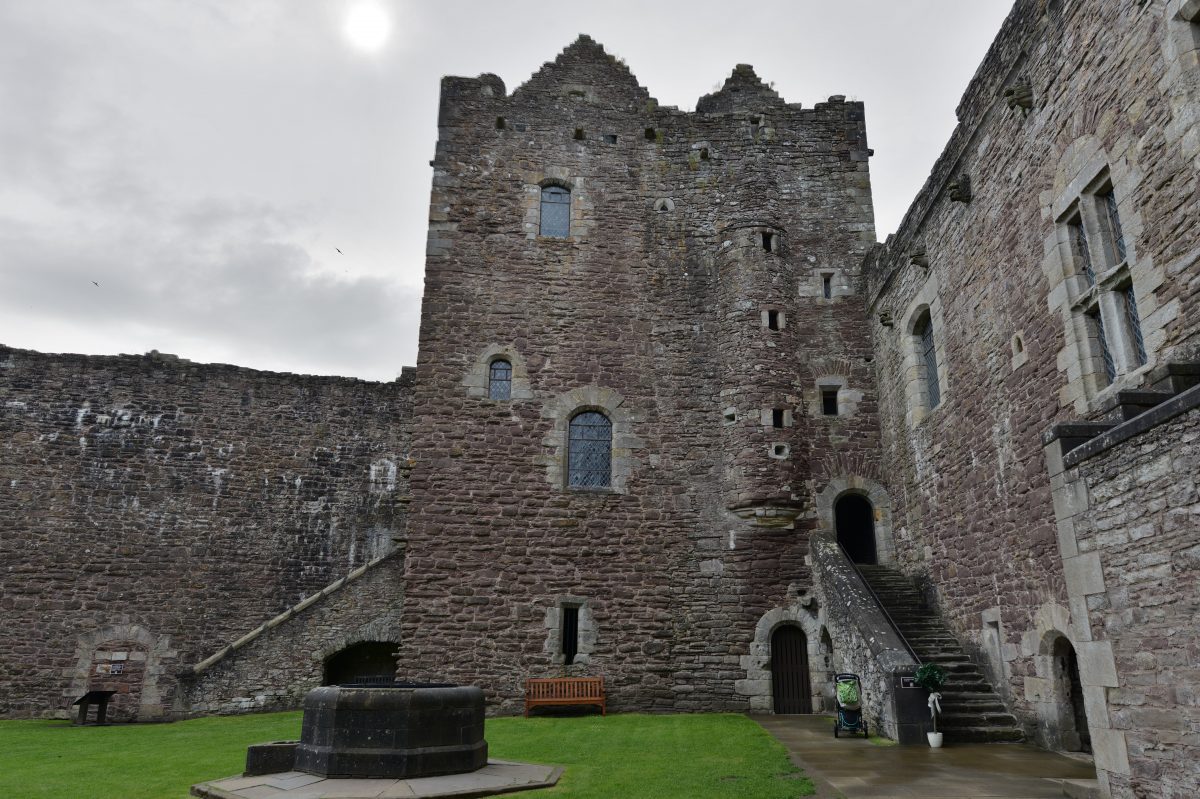
Photo by HARTLEPOOLMARINA2014 on Wikimedia Commons
If you’re a fan of Monty Python, then a trip to Doune Castle is a must. This castle was used for the setting for the 1975 film, Monty Python and the Holy Grail as well as the other productions such as Game of Thrones and Outlander.
Historically, it was the home of Robert Stewart, the 1st Duke of Albany and Governor of Scotland. Albany was made the ruler of Scotland from 1386 until his death in 1420 after King James I was taken prisoner in England. Doune was made an official royal castle when James I executed Albany and his son after he returned to Scotland.
Visitors can take an audio tour of the castle with narration provided by Monty Python’s Terry Jones. On the first floor, visitors can see the Great Hall where grand banquets were held. Also on this floor is the Duke’s Hall as well as the kitchen. By climbing up the spiral staircase, visitors can find themselves in either the Duchess’s Hall or the other chambers.
Within the castle grounds is a footpath that leads to the town of Doune as well as a riverside walk. For more information, please visit Historic Environment Scotland’s page of the castle.
6.
Newark Castle, Port Glasgow
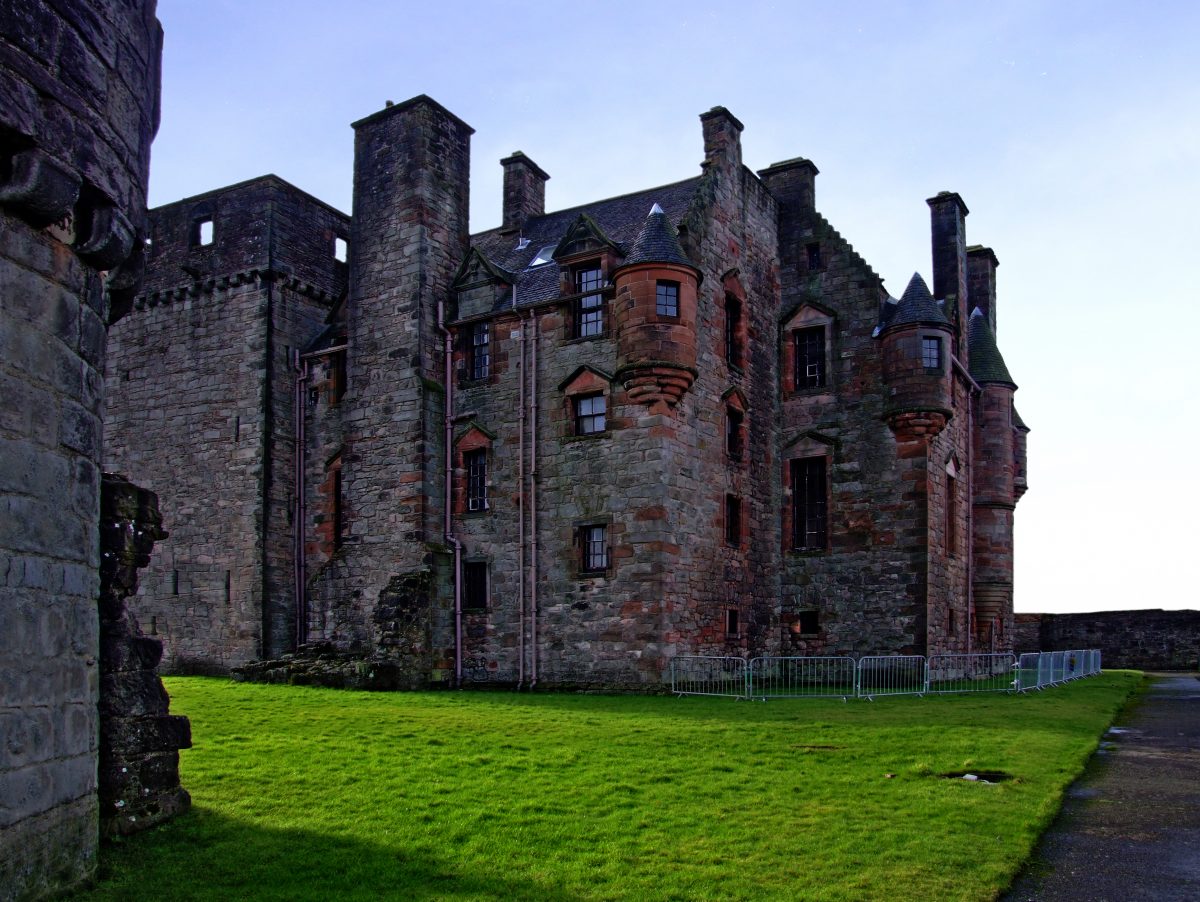
Photo by Scotia on Wikimedia Commons
Located in Port Glasgow, Newark Castle is one of the most well-preserved castles in all of Scotland. The castle was built in 1478 by Sir George Maxwell after gaining the deeds to the land. It remained as the residence of the Maxwells until 1694. His descendant, Sir Patrick Maxwell, further expanded the castle in 1597 turning it into more of a Rennasaince Mansion. The renovations include turning the north-east tower into a dovecote, pedimented windows and doorways and building a self-contained residence replacing the great hall.
With its distinctive Scottish Baronial style, visitors can easily recognize the castle from a mile away. Visitors can access many of the castle’s rooms. On the ground floor, visitors can go through the kitchen, bakehouse and wine cellar. By going down the stairs, visitors will find themselves in the servant’s quarters.
The first and second levels are where visitors can find the great hall and gallery. They will also find a bedchamber with a 16th-century bed-press with a painted ceiling above it. A spiral staircase in the castle will take them all the way up to the wallhead. In addition, visitors can also get a specular view of the Firth of Clyde from inside the castle.
The castle also has a visitor centre and a shop for souvenir shopping. For additional information, please visit Historic Environment Scotland’s page of the castle.
7.
Rothesay Castle
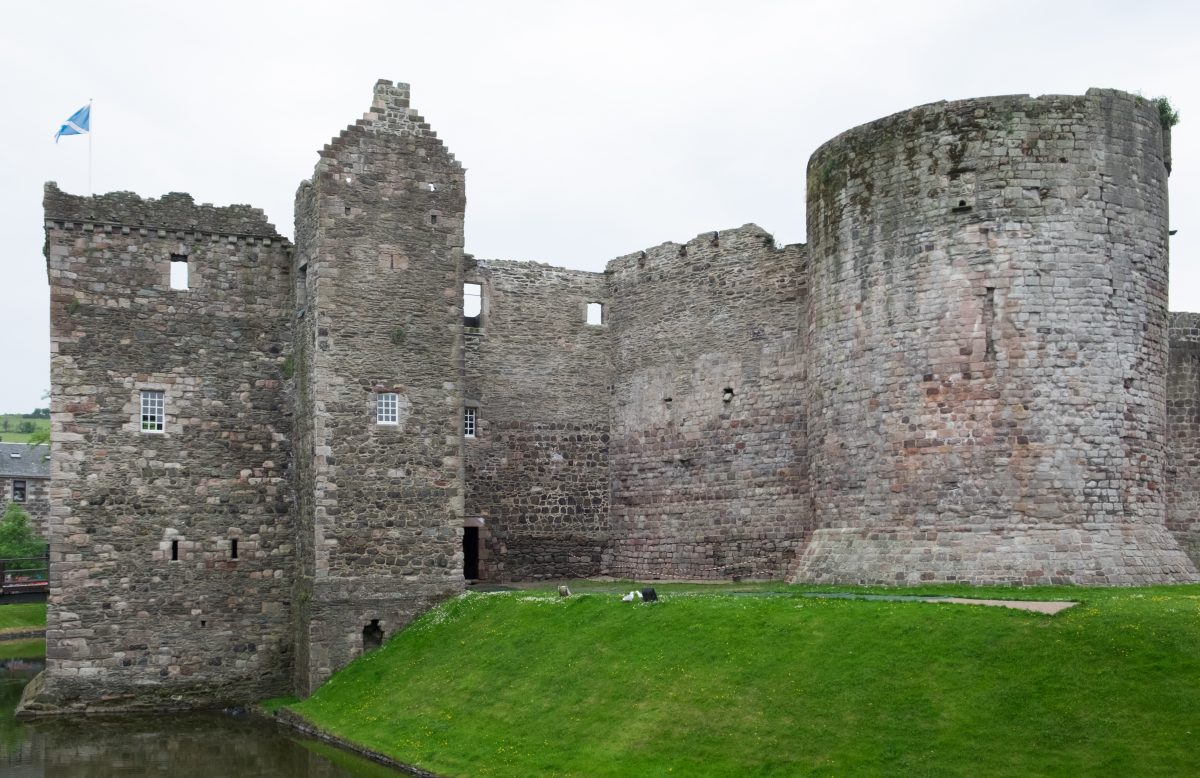
Photo by DeFacto on Wikimedia Commons
In the Isle of Bute in Western Scotland lies the Rothesay Castle, the only one in Scotland to have a curtain wall. The castle was built in the 13th Century as a fort to ward off attacks from the Kingdom of Norway. During the Wars of Scottish Independence, Rothesay Castle was taken over by the English but it was taken back by Robert the Bruce in 1311.
Rothesay became a royal castle when Clan Stewart took over Scotland after the war and was the favourite residence of Kings Robert II and Robert III. In the early 1650s, Oliver Cromwell invaded Scotland and garrisoned Rothesay Castle. Cromwell’s New Model Army left the castle in shambles once they left Scotland in 1660. Restoration efforts have been made since the 19th Century. By 1956, the castle was designated as a Scheduled Ancient Monument and is open to the public.
Visitors can access the castle by crossing a wooden bridge. Once there, they can walk around the castle’s moat to witness the grand scale of the curtain wall. Once inside the gatehouse, visitors can enter the Great Hall and find belongings of the castle’s previous owners on display. By going down a metal ladder, visitors can access the castle’s dungeon.
The castle also has a shop with ramped access for those looking to buy souvenirs. For more information, please visit Historic Environment Scotland’s page of the castle.
8.
Caerlaverock Castle
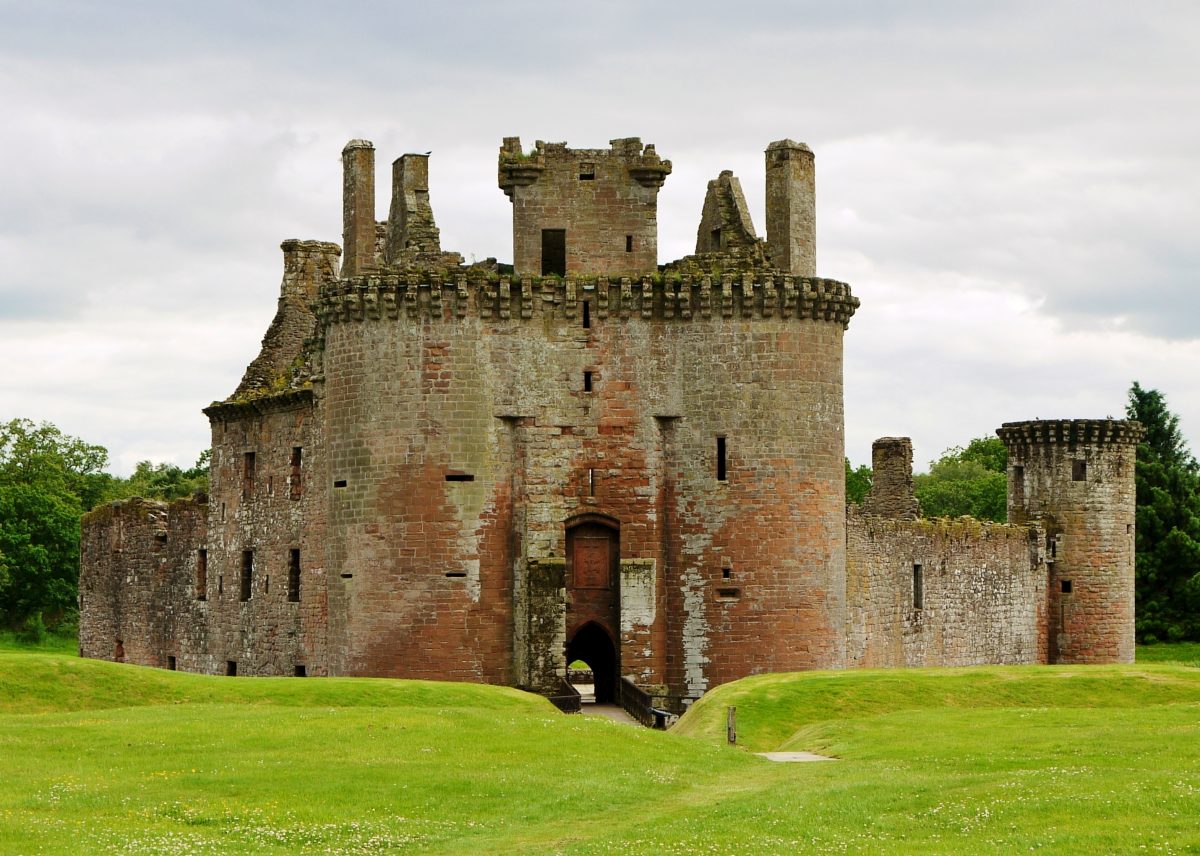
Photo by Graham Laird on Wikimedia Commons
In the South of Dumfries lies the very peculiar looking Caerlaverock Castle. This triangular-shaped fortress sits within a triangular moat and is protected by formidable red sandstone walls. The castle was built in the 1270s by Sir Aymer Maxwell. Since then, it has been the seat of the Chief of Clan Maxwell.
During the First War of Scottish Independence, the castle was under siege by Edward I’s army. The Maxwells fought them off and they were quickly expelled after their surrender. In 1640, the castle was under siege again when the Covenanters invaded and forced the Maxwells to surrender after holding off for 13 weeks.
Today, visitors can walk around the courtyard in the south range which provides incredible views of the moat. Visitors can also find the 17th Century Nithsdale Lodging in the Castle Courtyard. They can also reach the upper levels of the east range by taking a spiral staircase.
The visitor centre houses a café as well as a Siege of Caerlaverock exhibition that includes an audio-video presentation. Visitors to the castle can also find many birds and animals nearby as it’s located near the Caerlaverock National Nature Reserve.
For additional information, please visit Historic Environment Scotland’s page of the castle.
9.
Stirling Castle
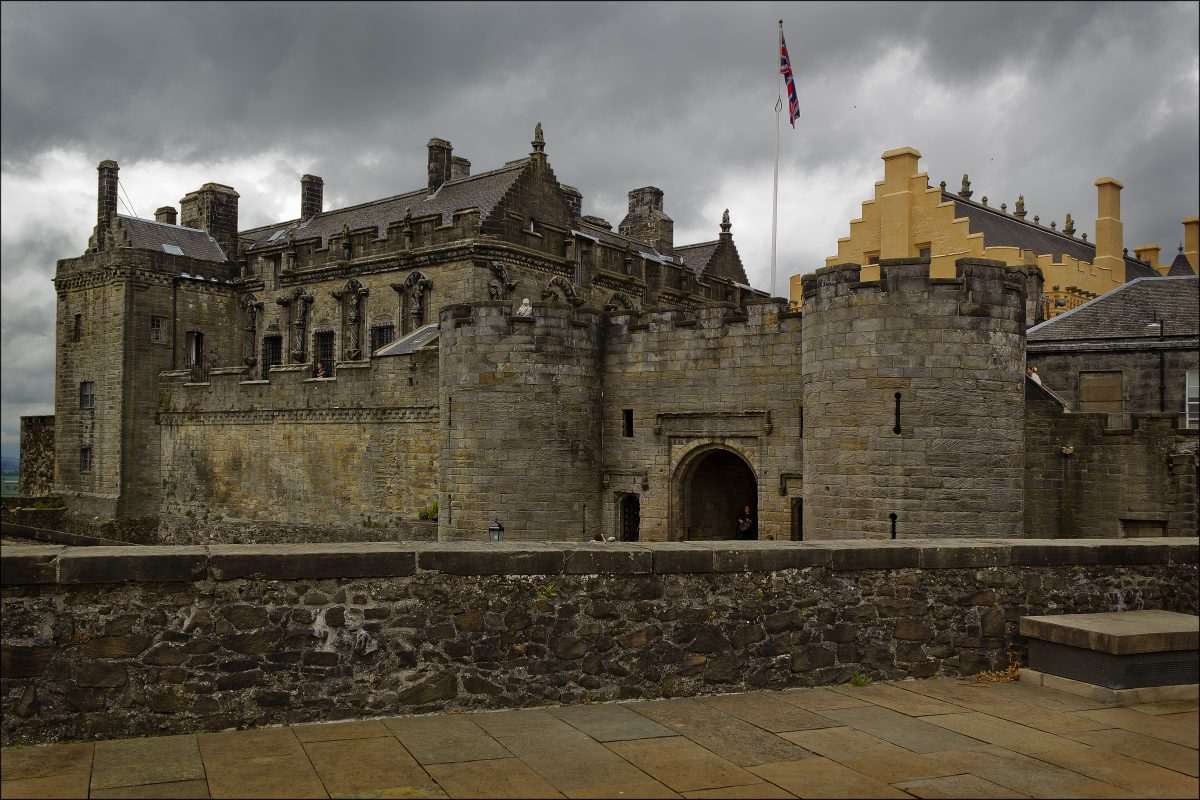
Photo by dun_deagh on Wikimedia Commons
One of the largest castles in the whole of Scotland, Sterling Castle is an integral part of Scottish history. It was where some of the most important events took place such as the coronation of several Scottish monarchs including Mary, Queen of Scots. Because of its importance, Sterling Castle has seen its fair share of battles and sieges. During times of peace, Scottish royalty and nobility would come to Sterling Castle to enjoy banquets and entertainment.
There are several places of interest within Sterling Castle that would entice first-time visitors. The castle’s Royal Palace is one of the best-preserved Renaissance buildings in the United Kingdom. This childhood home of Mary, Queen of Scots will transport visitors back in time as costumed performers will freely interact with them.
Visitors will be in awe once they enter the Great Hall, arguably one of the biggest banquet halls in Scotland. For any history buff, there is the Castle Exhibition for those who want to learn about the history of the castle. Visitors who are tired from walking around can stop at the Queen Anne Gardens to take a breather and chill under the 200-year-old Beech Tree.
The castle also provides guided tours where the guides would tell stories of the different sections and rooms of the castle. Audio tours are also provided in English, French, Spanish, German, Gaelic, Italian and Japanese.
After seeing everything that Sterling Castle has to offer, visitor can take a bite at the Unicorn Café. The rooftop patio of the café offers diners a beautiful view of the countryside including the Wallace monument. Visitors can also buy souvenirs at the castle’s many gift shops including Scottish crafts and jewellery.
For more information, please visit the castle’s official website.
10.
Edinburgh Castle
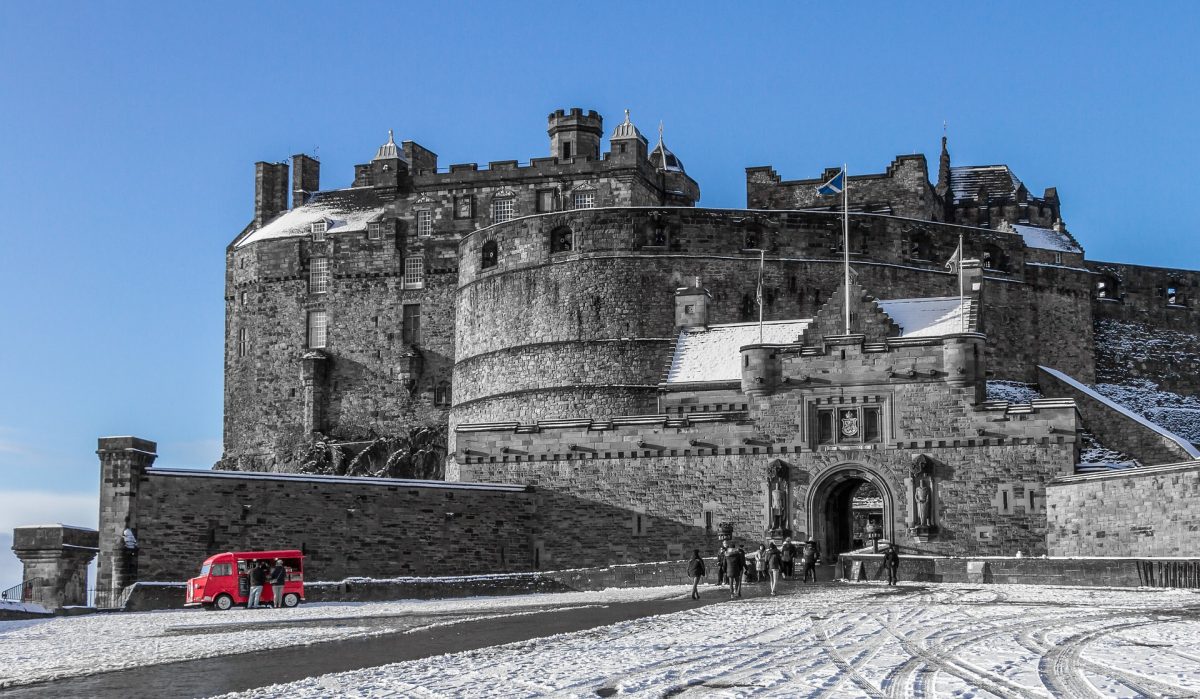
Photo by PicturesofScotland on Pixabay
We saved the best for last. No visit to Scotland is ever complete without paying a visit to arguably their most iconic building.
Dominating the skyline of the city of Edinburgh, Edinburgh Castle was the centre of much Scotland’s history. Serving as a battle fortress, Edinburgh Castle has been in numerous battles where it protected soldiers and held prisoners.
Like Sterling Castle, Edinburgh Castle also has a Royal Palace and a Great Hall for visitors to explore. Visitors can find the Honours of Scotland, the former crown jewels of Scottish Royalty and currently the oldest in Britain on display in the Crown Room of the Royal Palace. An exhibition for the crown is also located in the Crown Room.
The famous cannon, Mons Meg, used throughout much of Scotland’s history by the armies of several Scottish Kings, can be found here. There are also several cannons around the castle such as the Half Moon Battery and the One o’Clock Gun reminding visitors of its military past. Speaking of the military, visitors can learn more about its military past by visiting the National War Museum and Scottish National War Memorial within the castle.
Guided tours are available for those who want to see everything the castle has to offer. Audio tours are also provided in English, French, Spanish, German, Italian, Russian, Mandarin and Japanese.
For those who are feeling hungry, there are two cafés within Edinburgh Castle, the Redcoat Café and The Teas Room. Visitors can buy souvenirs at both the Portcullis Shop and Crown Gift Shop including jewellery, tapestries and Edinburgh Castle merchandise. For those looking for something more exquisite, visitors can buy fine bottles of whiskey and other drinks at the Whisky and Finest Food Shop.
For additional information, please visit the castle’s official website.
Final Thoughts
In conclusion, a visit to any of Scotland’s castles is essential to any trip to this country. You’ll get an experience that’s hard to forget as you’ll get immersed in your surroundings and feel like you’re part of Scotland’s medieval history. So if you’re planning your next trip to the land of the brave, make any one of these castles part of your itinerary.

